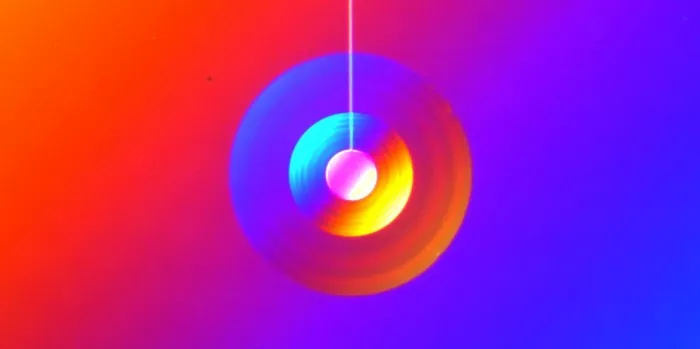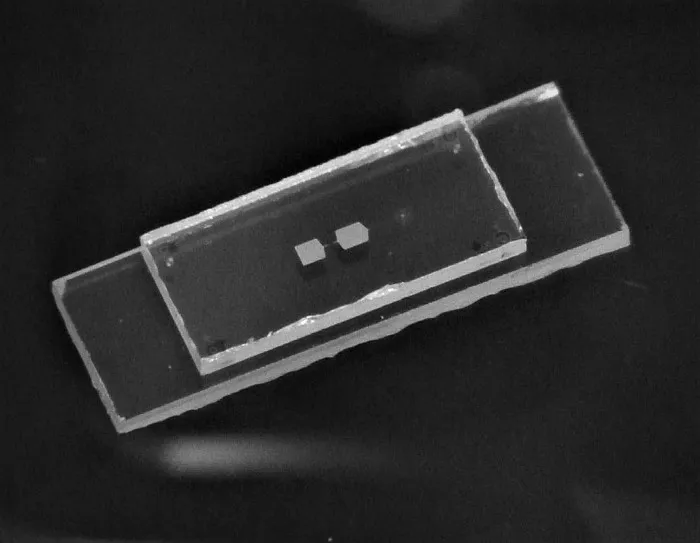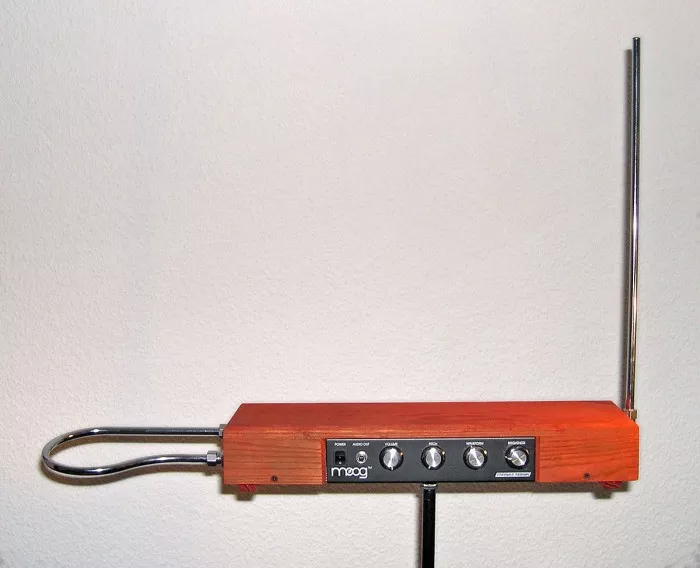The system of controlling mechanical motion at a single quantum level is becoming a promising quantum technology platform. New experimental work now determines how to measure the quantum properties of such systems without destroying quantum states - a key factor in fully tapping the potential of mechanical quantum systems When it comes to quantum mechanical systems, one may think of single photons and well isolated ions and atoms, or electrons propagating in crystals. In the context of quantum mechanics, what is more peculiar is the real mechanical quantum system; In other words, the mechanical motion of large mass objects, such as vibration, is quantified.

The picture shows the optical microscope image of the acoustic resonator (two large disks with piezoelectric transducers inside) and the antenna connected to the superconducting quantum orbit (white structure)
In a series of pioneering experiments, the basic quantum mechanical characteristics of mechanical systems have been observed, including energy quantization and entanglement. However, in order to apply these systems to basic research and technical applications, observing quantum properties is only the first step. The next step is to master the processing method of mechanical quantum objects, so that their quantum states can be controlled, measured and finally used in the structure of similar equipment.
The Zhu Yiwen team at the solid state physics laboratory of the Federal Institute of technology in Zurich has now made significant progress in this direction. Writing in the journal Nature Physics, they report on extracting information from mechanical quantum systems without destroying precious quantum states. This progress paves the way for applications such as quantum error correction, and even more.
Large scale quantum mechanics
Eth physicists used a high-quality sapphire with a thickness of slightly less than half a millimeter as their mechanical system. A thin piezoelectric transducer at the top can be used to excite sound waves, which are reflected at the bottom to extend a clear volume in the plate. Excitation behavior is the collective motion of a large number of atoms, but they can be quantified (in units of energy called phonons) and can be affected by quantum operations, at least in principle, in a way very similar to the quantum states of atoms, photons and electrons.
Interestingly, it is possible to connect mechanical resonators with other quantum systems, especially superconducting qubits. The latter are tiny electronic circuits in which the electromagnetic energy state is quantified. At present, they are one of the main platforms for building scalable quantum computers. The electromagnetic field associated with the superconducting circuit enables the qubit to be coupled with the piezoelectric transducer of the acoustic resonator, so as to be coupled with its mechanical quantum state.
Mixing device for flip chip bonding

Photo of a hybrid device bonded by flip chip, acoustic resonator chip on top of superconducting qubit chip. The length of the bottom chip is 7 mm.
In such a hybrid qubit resonator device, the advantages of the two worlds can be combined. Specifically, the highly developed computing power of superconducting qubits can be used synchronously with the robustness and long life of acoustic modes, which can be used as quantum memory or sensor. However, for such applications, only coupling the state of qubits and oscillators is not enough. For example, the direct measurement of the quantum state in the resonator will destroy it and make repeated measurement impossible. On the contrary, what is needed is the ability to extract mechanical quantum state information in a more gentle and well controlled way.
Non destructive path
UWE von L ü PKE, Yu Yang and Marius Bild, doctoral students led by Zhu Yiwen, have now realized this so-called quantum non-destructive measurement protocol in cooperation with Branco Weiss researcher Matteo Fadel and with the support of semester project student Laurent Michaud. In their experimental measurements, there is no direct energy exchange between superconducting qubits and acoustic resonators. On the contrary, the properties of qubits depend on the number of phonons in the acoustic resonator and do not need to "contact" the mechanical quantum state directly -- think of the Tremin played by Sheldon in the American drama the big bang for life. The pitch of this instrument depends on the position of the musician's hand rather than physical contact with the instrument.

Creating a hybrid system in which the state of the resonator is reflected in the spectrum of qubits is very challenging. There are strict requirements on how long the quantum state can be maintained in the qubit and oscillator before it will disappear due to the imperfections and disturbances of the outside world. Therefore, the task of the team is to promote the lifetime of qubits and oscillator quantum states. After a series of improvements, they succeeded, including carefully selecting the type of superconducting qubit used and encapsulating the mixing device in a superconducting aluminum cavity to ensure strict electromagnetic shielding.
Provide quantum information on the basis of understanding
After successfully pushing their system into the desired operating system (known as the "strong dispersion system"), the team was able to stimulate the acoustic resonator with different amplitudes and then gently extract its phonon number distribution. In addition, they showed a way to determine whether the number of phonons in the resonator is even or odd in one measurement - a so-called parity measurement - without knowing any other information about the phonon distribution. Obtaining this very specific information, but no other information, is very important in some quantum technology applications. For example, a change in parity (from odd to even or vice versa) can indicate that an error has affected the quantum state and needs to be corrected. Of course, it is essential that the corrected state is not destroyed.
However, before implementing this error correction scheme, it is necessary to further improve the hybrid system, especially to improve the fidelity of operation. However, so far, quantum error correction is not the only use on the horizon. In the scientific literature, there are a large number of exciting theoretical suggestions for quantum information protocols and basic research. These suggestions benefit from the fact that acoustic quantum states reside in large mass objects. For example, this provides a unique opportunity to explore the scope of quantum mechanics at the limit of large-scale systems and use mechanical quantum systems as sensors.